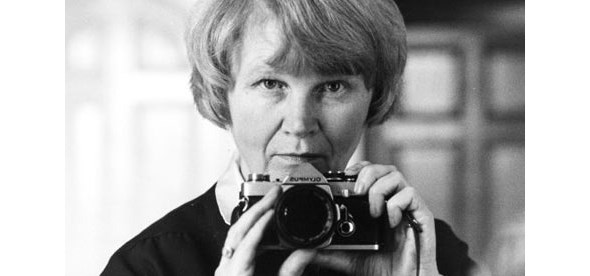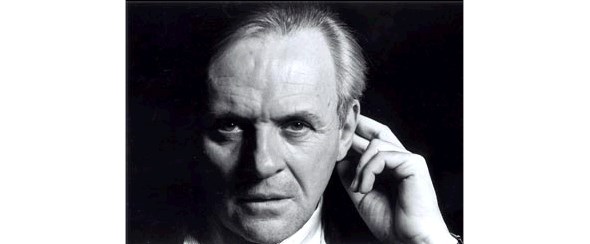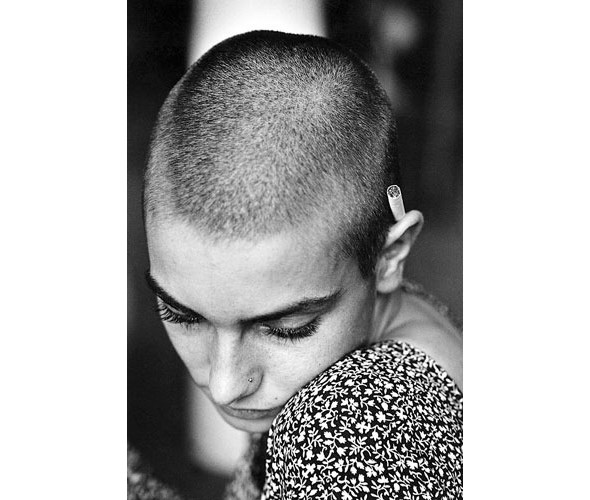Over the coming months, I’m going to select a number of images taken by famous photographers that feature key portraits of the 20th century. Portraiture, whether taken in the studio or by natural light has always been a passion of mine. Images that show something about the subject, how the photographer can penetrate through the façade that we all show when our picture's taken. We still use that phrase don’t we; ‘take a picture’, meaning that we take something from our subject, making a portrait sitting an intimidating process - something I know only too well sitting in front of studio lights!
For this month’s image, I’ve chosen a portrait by Jane Bown. In my opinion Jane Bown is one of the most influential British female photographers of the twentieth century. Her amazing career spans more than 50 years shooting for the Observer and Guardian newspapers, her first portrait appearing in 1949. In Europe, she would be lauded as the great photographer she is, but sadly here in the UK we don’t seem to recognise that greatness in our own photographers and it seems few people have even heard of Jane Bown, a good reason to feature her work here.
 Jane Bown (taken in mirror)
Jane Bown (taken in mirror)Jane studied photography at Guildford College under the watchful eye of the famous Ifor Thomas and her contemporaries who studied with her included Tessa Traeger, the renowned still-life photographer and John Hedgecoe, photographer, author and latterly Professor at the Royal College of Art. After leaving college, she started her career as a child photographer, but following a phone call from Mechthild Nawaiasky, an Observer picture editor, she was asked to photograph Bertrand Russell. This led Jane Bown to her long and incredibly successful career in photojournalism.
The thing that I find so fascinating about Jane Bown’s work is the simplicity of her approach. She always worked alone, shot in black and white and seldom used any type of supplementary lighting to create her portraits, relying on natural light wherever possible. This approach to her work is also reflected in the equipment she used, keeping everything as simple and basic as possible. She started off using a Rollei, moving on to a Pentax and then on to the trusty Olympus camera (some say, permanently set at a 60th at f2.8) that she used for the rest of her career.
I very much doubt that many photographers would have the confidence to work in the same way these days, preferring to rely on their ‘modes’ and their ‘menus’ to see them through. I have to say that I applaud Jane Bown’s approach to portraiture, keeping things simple, just allowing the camera to explore. As she said, “The best pictures are uninvited. They’re suddenly there in front of you. But they are there one minute and gone the next. I mean it is quite easy to take a photograph, but difficult to get the shot.”.
As a photojournalist, all her work was shot on location, sometimes having only a few minutes with each subject. With that in mind, you can see that her simple system of camera settings would be a real advantage, not having to worry or waste time making changes, but only having to watch her subject and capture the right moment. Easier said than done, but, to quote Bown again, “Some people take photographs, I find them.” What a great way of putting it; "finding" a shot. I think that sums up her work in a nutshell as she always seemed to get the right shot every time.
In the course of her 50-year career, she shot so many famous faces for the paper that it’s impossible to list them all here. What is amazing about her career is that she managed to publish so many books, a real achievement for any photographer. Starting with 'The Gentle Eye' in 1980, she has published 10 books of superb images that also include two of my favourites, 'Unknown Bown 1947-1967' in 2007 and 'Exposures' in 2009. All I can say is that looking at any of her images will be an inspiration to anyone who wants to shoot portraiture. Bown was also awarded the MBE in 1985 and the in CBE 1995 for her outstanding contribution to photography.
With so long and distinguished career, choosing just one image to feature here has been a real a problem for me. I could choose so many outstanding portraits from any part of her career, showing the quality and sheer consistency of her work. To give you a flavour of her work, I’ve cheated a little and chosen two images to show you. The first image is a well-known portrait of the actor Anthony Hopkins. I’ve always loved this portrait and would have been very proud to have taken it myself! It’s a marvellous low key portrait which is superbly composed, lit, and cropped, showing Hopkins in his rather menacing Hannibal Lector pose seeming to appear from a very dark place. As I mentioned before, if there was not enough natural light, Bown would use a table lamp if pushed and I’m not sure what type of lighting she used here, but whatever it was it worked a treat. This low key portrait is very typical of her work and I can imagine Bown stalking Hopkins trying to "find" that one shot.
 Anthony Hopkins by Jane Bown
Anthony Hopkins by Jane BownThe second portrait I’ve chosen is of Sinead O’Connor. I always admired photographers who shoot their subjects in a slightly unconventional way, like Antonin Kratochvil, and Bown has shot O’Connor in a wonderful pose. Choosing not to shoot her front on, we see O’Connor’s unmistakable shaved head in a very calm, almost praying pose, her head bowed, eyes closed.
Yet this is clearly a superb, and I find very beautiful, portrait of Sinead O’Connor. It was shot, as we would expect from Bown in natural light with the lens wide open, probably with her trusty Olympus set at those preferred settings of hers. The blurred background throwing all the focus onto the subject itself and I can imagine Bown waiting patiently to find that shot. To me, this portrait just proves once again that you don’t have to shoot people front on smiling against a high key background!
 Sinead O'Connor by Jane Bown
Sinead O'Connor by Jane BownI hope that you’ve enjoyed looking at these portraits as much as I have enjoyed writing about them. I would urge you to seek out more of Jane Bown’s superb work via her own books, or view her images on line. As usual if you have any comments or questions that relate to this article, or any flash related questions, do drop me an email at steveaves@tiscali.co.uk.
